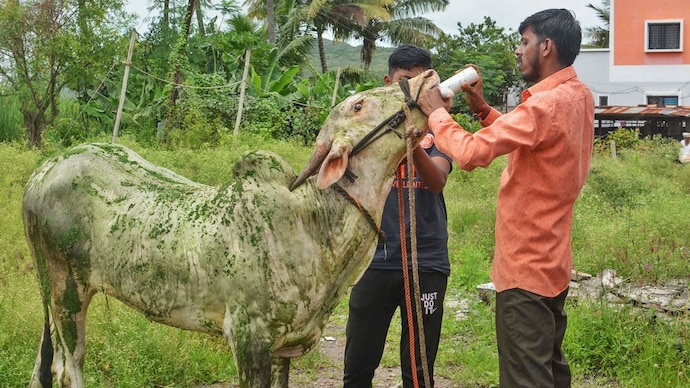A team of Indian scientists, led by Utpal Tatu, Professor in the Department of Biochemistry at the Indian Institute of Science (IISc), has made significant progress in understanding the genetic makeup of the virus responsible for lumpy skin disease (LSD) that has impacted India’s cattle population.
Background
- Lumpy skin disease was first identified in Zambia in 1931.
- Notable outbreaks occurred in South Asia, particularly India, with severe occurrences in 2019 and 2022, affecting millions of cows.
- The disease is transmitted by blood-feeding insects and manifests through fever and skin nodules, often leading to death in previously unexposed animals.
Research Methodology
- Extensive investigation involved collecting samples from infected cattle across various states in India.
- Advanced whole-genome sequencing techniques were employed on DNA extracted from these samples.
- Techniques from Covid-19 research were adapted due to the lack of existing frameworks for LSDV sequencing and analysis.
Findings
- Two distinct variants of LSDV were identified within India.
- One variant closely related to previous local outbreaks, and another with high genetic variations similar to a 2015 outbreak in Russia.
- Over 1,800 genetic variations were identified, including deletions, insertions, and single-letter DNA changes.
- Significant alterations were found in viral genes crucial for host cell binding, immune response evasion, and efficient replication.
Implications
- Highly varied LSDV strains were unexpected, potentially explaining the severity of the outbreak.
- Genetic variations likely contributed to enhanced virulence, correlating with severe symptoms observed in cattle.
- Genomic data provides valuable insights for future vaccine development, aiding in targeting molecular hotspots and genetic variations.
Multiple-Choice Questions (MCQs):
- Who led the research on the genetic makeup of the lumpy skin disease virus in India?
- A) Utpal Tatu
- B) Utpal Singh
- C) Utpal Kumar
- D) Utpal Sharma
- Answer: A) Utpal Tatu
- When was lumpy skin disease first identified?
- A) 1931
- B) 1945
- C) 1950
- D) 1920
- Answer: A) 1931
- How is lumpy skin disease transmitted?
- A) Through contaminated water
- B) Through direct contact with infected cattle
- C) Through blood-feeding insects
- D) Through airborne particles
- Answer: C) Through blood-feeding insects
- What was a significant challenge faced by the researchers during their investigation?
- A) Lack of funding
- B) Lack of research equipment
- C) Lack of existing frameworks for LSDV sequencing and analysis
- D) Lack of cooperation from cattle farmers
- Answer: C) Lack of existing frameworks for LSDV sequencing and analysis
- How many distinct variants of LSDV were identified within India?
- A) One
- B) Two
- C) Three
- D) Four
- Answer: B) Two
